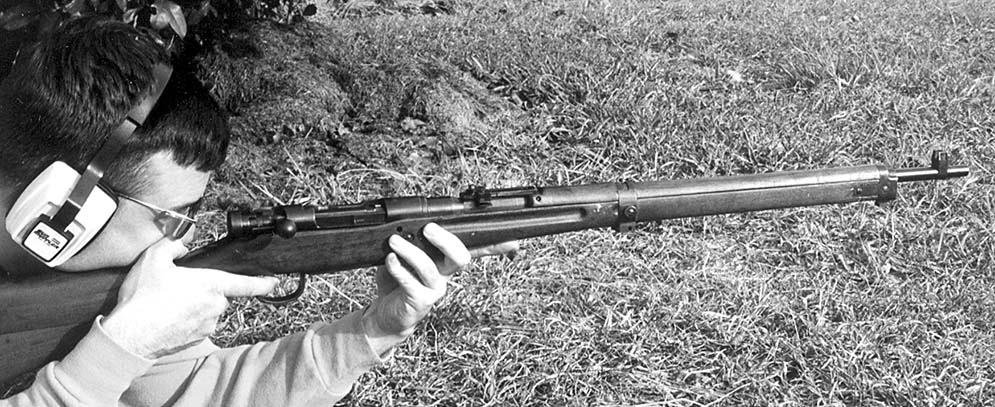By Stephen Stuart
During the war in Manchuria and China during the 1930’s, there was controversy within the Japanese Armed Forces, that their standard 6.5 mm cartridge may have been insufficient for their military needs. A more powerful round was needed for their infantry troops. Toward the end of 1938, experiments were conducted at Futsu Proving Ground to develop a new cartridge. These developments were centered on the 7.7 mm cartridge. Due to recoil problems in testing the weapons (Japanese Type 44 Carbines), a full length rifle was proposed.
The Type 99 rifle was accepted for service a year later in 1939. It became available in two lengths. The two main manufacturers were Nagoya Arsenal and Toyo Kogyo. Like the earlier Type 38 Rifles (which the Type 99 was designed to replace) it featured the same strong Mauser based bolt action and knob safety as found on the Type 38’s. It had a fixed magazine, which held 5- rounds. Overall length was 44 inches and weighed 8.8 pounds. Barrel length was 31 inches for the long version, the shorter model featured a barrel length of 25 1/2 inches. Sights were graduated from 300 to 1700 meters. The rear sight featured a peep sight for targets fewer than 300 meters. The front sight was a standard inverted “V” with guards. One of the unique things about the rear sight is that it usually came with anti-aircraft wings that could be folded down. These wings would allow for the proper lead when engaging enemy aircraft. The Type 99 was the first Japanese rifle to include a monopod. The monopod was designed to allow the firer a more stable firing platform when shooting form the prone position. The 99 long version had a monopod one-quarter inch longer than the short model 99. The 99 long also featured a two-piece monopod retaining spring compared to the one-piece spring located on the 99 short. As with the Type 38 rifles, a cleaning rod was stored directly beneath the barrel. The rod itself was 29 1/4 inches in length and was released by pressing a small square metal stud located behind the bayonet lug. The standard bayonet issued with the Type 99 was the Type 30. The top of the receiver is usually marked Type 99 in Japanese characters. The Royal chrysanthemum can be found just above these characters, of a special note to collectors is that in many cases these were ordered removed before being brought back into the states.
The 7.7x58mm rimless Arisaka round had a bullet weight ranging from 12 grams for ball to 9.7 grams for tracer and armor piercing ammunition. The ball’s projectile jacket was made up of copper-nickel and the core was lead. The armor-piercing version also used a copper-nickel jacket, but featured a core of hard steel. The easiest way to tell the difference between the individual rounds is by the band color that is located on the bullet where it seats into the brass. Pink represents standard ball, green is tracer, and black is armor piercing. The round can also be used for Type 92, Type 1, and Type 97 machine guns. However, the 7.7x58R, should under no circumstances be fired in the bolt action Type 99 rifles. The standard cartridge was packed in 5-round clips, three clips to a box. There are only a couple of companies that produce this round today with Norma of Sweden being the most common. As with most oddball cartridges in my collection, I follow the lead of other shooters and reload most of my ammunition for this cartridge.
At the range the rifle handled smoothly and produced groups under three inches when fired offhand at 100 meters. All the ammunition used for testing was ammunition I had hand loaded myself. Even though the Type 99 long was not the most advanced design to see service in World War II, it was not an antique firearm either. For collectors of military arms, these Japanese rifles of World War II are a worthy addition to one’s small arms collection. Priced under $150 dollars- they are a steal.
For more information on the Japanese Type 99 long I suggest the following texts;
Japanese Rifles of World War II, by Duncan McCollum
Military Rifles of Japan, by Fred L. Honeycutt and F. Patt Anthony
| This article first appeared in Small Arms Review V4N3 (December 2000) |











